Dhaka's traffic through a visitor's eyes

"Having worked in Manila, Hanoi, Lahore, Delhi, Bangkok, and many other large cities notorious for traffic congestion, I didn't expect Dhaka to be different. But I was wrong," chuckled Lucy, a girls' education consultant and a long-time friend with an ever-positive attitude. The drive to the hotel, only seven kilometres away, took two hours, she recounted over coffee at a local cafe.
Slowness aside, what baffled her most was the complete unpredictability of movement. "In other cities, traffic follows some basic patterns—it moves in lanes, stops at red lights, gives way to emergency vehicles," she explained. "Here, it's as though every driver is following a different rulebook—or no rulebook at all." Vehicles create improvised lanes, turning two-lane roads into four or five lanes of tightly packed cars, buses, rickshaws, and motorcycles, some driving in the opposite direction. Traffic signals, when present, are entirely optional. Vehicles stop randomly in busy streets to pick up or drop off passengers. Drivers communicate through a complex language of honking.
"And the motorcycles!" Lucy exclaimed, her eyes widening. "They're everywhere." They ignore every conventional traffic rule—driving on sidewalks, going against traffic, zigzagging between vehicles at dangerous speeds. They carry entire families of four, weaving through bumper-to-bumper traffic, frequently missing collisions by inches, not one helmet among them. Even Hanoi—famous for its sea of motorcycles—maintains certain patterns and unwritten rules, but not Dhaka.
What most perplexed Lucy was the disconnect between written regulations and street reality. Bangladesh has comprehensive rules on paper, including requirements for driver licensing, vehicle certification, and traffic behaviour. But the streets are full of rickshaws with no license plates, buses in visibly dangerous condition, drivers without formal training, and vehicles that would never pass a basic safety inspection anywhere else.
"It's not that there's no enforcement," Lucy observed. "It's selective enforcement. I noticed how luxury vehicles of government or political high-ups are given free passage, while others are occasionally stopped." This pattern reveals something deeper about how the city functions—the rules apply differently depending on who you are and your connections.
Lucy's work often focuses on safety issues in school attendance. In Dhaka, she was stunned by the dangers that pedestrians, especially schoolchildren, face daily. Young girls in school uniforms cross fast-moving, chaotic traffic because no safe crossing is nearby. The footbridges are mostly empty—too steep, far apart, and sometimes unsafe.
Pedestrians in Dhaka have a sixth sense—a split-second timing for when to dash between vehicles. Those who can't move quickly—older people, people with disabilities, and parents with young children—face nearly impossible challenges. "It's survival of the fittest in its purest form," Lucy noted wryly.
What truly sets Dhaka apart is the sheer number of unauthorised vehicles. Many vehicles have questionable legal status, from thousands of unregistered autorickshaws to buses running without proper permits. Getting a driving licence is arduous and time-consuming, forcing people to find "other" ways to obtain one. The result is predictable: constant near-misses, frequent accidents, and a pervasive sense of danger.
Lucy's observation is spot on: Dhaka's traffic shows a pattern of inequality and adaptation with two simultaneous transportation systems. "For the wealthy and connected, there are private vehicles with drivers, air-conditioned ride-shares, and the privilege of ignoring rules without consequences. For everyone else, there are overcrowded buses, rickshaws, and long walks along roads without proper sidewalks."
This division reflects broader social inequalities. People with low incomes spend a disproportionate amount of time and income on transportation, face greater physical danger, and endure more stress and struggle in their daily commutes. "It actively limits opportunity. I met girls who couldn't attend better schools because safe transportation wasn't available. Women couldn't accept jobs far from home because of the risks and harassment they'd face on public transportation," Lucy explained.
Despite her shock at the traffic conditions, Lucy was impressed by how Dhaka's residents have adapted to this challenging environment. They have developed remarkable navigation skills, created informal systems to move through the chaos with knowledge of shortcuts, unwritten rules about when certain routes are passable, and creative solutions to seemingly impossible obstacles. Delivery persons on bicycles navigate through bumper-to-bumper traffic. Street vendors turn traffic jams into business opportunities, moving between stopped vehicles to sell everything from bottled water to mobile phone accessories. "There's an extraordinary resilience here," she said, "but that comes at a tremendous cost in time, safety, and quality of life."
Dhaka's traffic is a microcosm of larger governance challenges. The same patterns—nominal rules undermined by selective enforcement, the power of connections over regulations, the ingenuity of ordinary people in navigating broken systems—appear in many aspects of urban life.
"The traffic isn't just a transportation problem," she concluded. "It's a governance problem, an equality problem, a public safety problem, and ultimately a development problem. When basic mobility becomes difficult and dangerous, it affects everything else—education, healthcare, economic opportunity, social cohesion." Her last words: "I am grateful to this unique city because it has taught me to be humble, for I don't have to endure the struggle its residents must face daily."
Lucy was about to disappear through the departure terminal gate when she popped out her head, "Look right, left, front, and back while crossing the road, would you?"
Dr Sayeed Ahmed is a consulting engineer and the CEO of Bayside Analytix, a technology-focused strategy and management consulting organisation.
Views expressed in this article are the author's own.
Follow The Daily Star Opinion on Facebook for the latest opinions, commentaries and analyses by experts and professionals. To contribute your article or letter to The Daily Star Opinion, see our guidelines for submission.
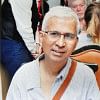
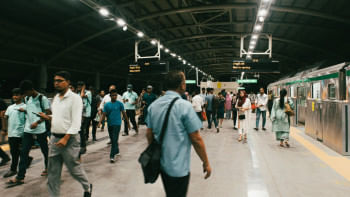
 For all latest news, follow The Daily Star's Google News channel.
For all latest news, follow The Daily Star's Google News channel. 


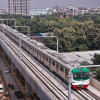
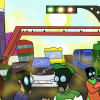


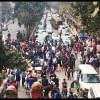

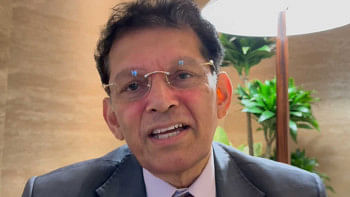
Comments